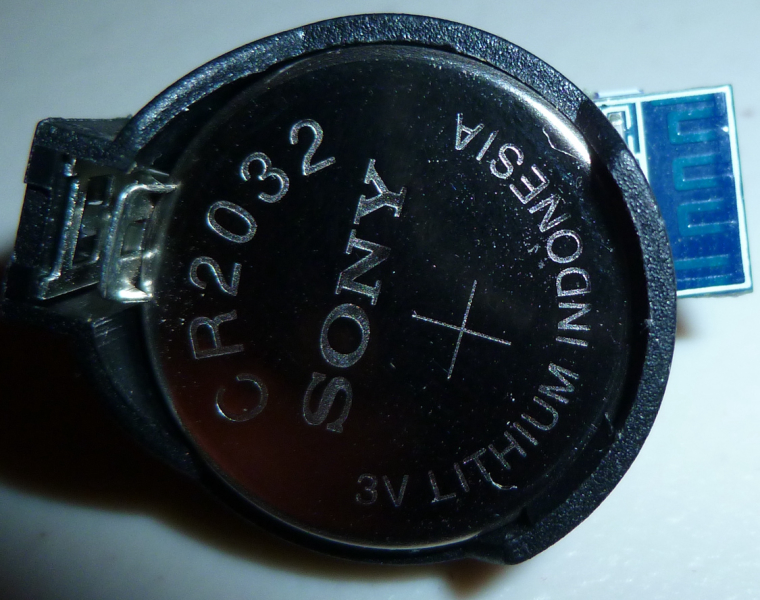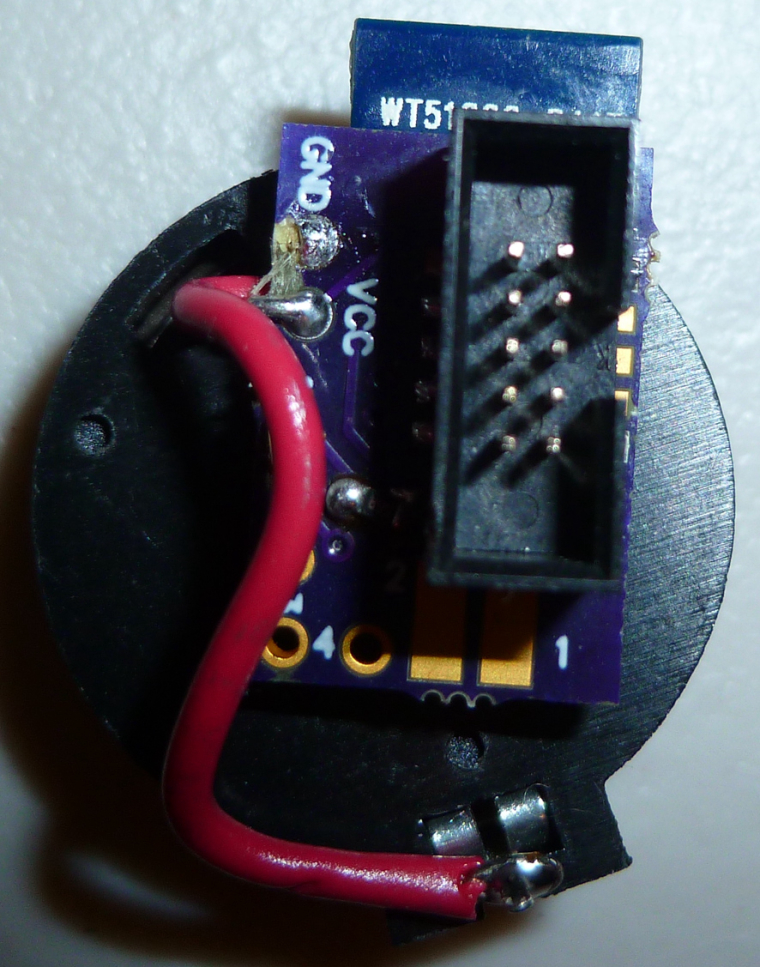nRF5 action!
-
cool.
you could add some clearance for the antenna, better I think for antenna radiation. -
@scalz said in nRF5 Bluetooth action!:
you could add some clearance for the antenna, better I think for antenna radiation.


OK, I adjusted it. How about now?
-
I dont have access to the source code now. Can someone please tell which pins are configured as Tx and Rx for serial communication ?
-
I dont have access to the source code now. Can someone please tell which pins are configured as Tx and Rx for serial communication ?
@ahmedadelhosni Do you mean in general? In the general case, you can select which pins are meant for Rx and Tx using your software.
-
@ahmedadelhosni Do you mean in general? In the general case, you can select which pins are meant for Rx and Tx using your software.
Yes I read this from the datasheet but I thought maybe MySensors defines some Pins for debugging.
How can I set them ? Any ApI refrences ?
-
Yes I read this from the datasheet but I thought maybe MySensors defines some Pins for debugging.
How can I set them ? Any ApI refrences ?
@ahmedadelhosni said in nRF5 Bluetooth action!:
Yes I read this from the datasheet but I thought maybe MySensors defines some Pins for debugging.
How can I set them ? Any ApI refrences ?
Look at the source code posted at https://www.openhardware.io/view/510/CR2032-Small-Wireless-Temperature-Humidity-Sensor#tabs-source
It will be obvious from that.
-
Yes I read this from the datasheet but I thought maybe MySensors defines some Pins for debugging.
How can I set them ? Any ApI refrences ?
@ahmedadelhosni said in nRF5 Bluetooth action!:
Yes I read this from the datasheet but I thought maybe MySensors defines some Pins for debugging.
How can I set them ? Any ApI refrences ?Most NRF5 pins are freely configurable. MySensors only uses the definition of the Arduino variant. If you are not lucky with the pins defined with the Arduino board variants, you can use the ArduinoHwNRF5 board. There are examples to redefine pins.
This repository has the release 0.1.0 its usable and stable, but I have plans to rename the files to MyBoardNRF5 and change the g_ADigitalPinMap to the more flexible Arduino primo format in the near future. I think this is required to support NRF52840 MCUs in the future.
-
Thanks both for the guiding. I will look through them.
-
@NeverDie how is the battery voltage doing on your existing test node ?
I think you should include a strong capacitor to help the battery during TX/RX sequences. It's probably less necessary on NRF5 boards, but on atmega+nrf24 a board without a 100-200µF (meaning only around half of that available with a 3V bias) capacitor has a very poor battery life. -
@NeverDie how is the battery voltage doing on your existing test node ?
I think you should include a strong capacitor to help the battery during TX/RX sequences. It's probably less necessary on NRF5 boards, but on atmega+nrf24 a board without a 100-200µF (meaning only around half of that available with a 3V bias) capacitor has a very poor battery life.@Nca78 said in nRF5 Bluetooth action!:
@NeverDie how is the battery voltage doing on your existing test node ?
I think you should include a strong capacitor to help the battery during TX/RX sequences. It's probably less necessary on NRF5 boards, but on atmega+nrf24 a board without a 100-200µF (meaning only around half of that available with a 3V bias) capacitor has a very poor battery life.No real data as of yet, though I haven't noticed any problems per se. What size capacitor do you recommend?
Here's why I was hoping I could maybe sidestep the issue:

http://data.energizer.com/pdfs/cr2032.pdf
i.e. very short pulses might have stable voltage. I'm not sure what amount of current is assumed by that Energizer graph though. -
@ahmedadelhosni said in nRF5 Bluetooth action!:
Yes I read this from the datasheet but I thought maybe MySensors defines some Pins for debugging.
How can I set them ? Any ApI refrences ?Most NRF5 pins are freely configurable. MySensors only uses the definition of the Arduino variant. If you are not lucky with the pins defined with the Arduino board variants, you can use the ArduinoHwNRF5 board. There are examples to redefine pins.
This repository has the release 0.1.0 its usable and stable, but I have plans to rename the files to MyBoardNRF5 and change the g_ADigitalPinMap to the more flexible Arduino primo format in the near future. I think this is required to support NRF52840 MCUs in the future.
@d00616 said in nRF5 Bluetooth action!:
I think this is required to support NRF52840 MCUs in the future.Again, you've done a nice a work on ESB driver :+1:
At least we can confirm that nrf52840 works with regular variant boards, and basic MySensors features, as it was a part of an intense traffic setup yesterday.That's the proof MySensors is getting better week after week :)
-
@NeverDie
I would use 100 to 200uf like said above. That's what i'm doing with all my coincell nodes too.
This is regarding the internal resistance of coincells which is not great >5mA, especially when coincell will be more aged. So it is recommanded to increase lifetime.But not too strong capacitor value, else that won't be better (you don't want to waste energy, and increase internal coincell res, by charging caps, else you would need a current limiting resistor lol).
I would not be too cheap by omitting decoupling and buffering capa, on my boards I prefer to have footprints (optional or not) because sure it can work well at the beginning but as soon as lifetime goes, it can change..
-
Thank you @nca78 and @scalz . Per your suggestions, I added a 100uF ceramic cap to version 8 of the multi-sensor board:
https://www.openhardware.io/view/510/Multi-Sensor-TempHumidity-LeakMagnetLightAccel -
Anyone tried building a bluetooth stack on the nRF5x from within the Arduino IDE? I can see how running it simultaneously with the mySensors code would be tricky, but maybe one could switch back and forth between the two? e.g. if you want to output debug text to a terminal window on your smart phone via bluetooth If so, anyone have any demo code for doing that?
For that matter, has anyone here tried the Arduino Primo? And if so, how did it go?
-
Anyone tried building a bluetooth stack on the nRF5x from within the Arduino IDE? I can see how running it simultaneously with the mySensors code would be tricky, but maybe one could switch back and forth between the two? e.g. if you want to output debug text to a terminal window on your smart phone via bluetooth If so, anyone have any demo code for doing that?
For that matter, has anyone here tried the Arduino Primo? And if so, how did it go?
@NeverDie said in nRF5 Bluetooth action!:
Anyone tried building a bluetooth stack on the nRF5x from within the Arduino IDE? I can see how running it simultaneously with the mySensors code would be tricky, but maybe one could switch back and forth between the two?
From what I understand this is not possible, the NRF5 Core used by @d00616 is not using the soft device to have better access to the hardware, while the Arduino IDE version is using soft device to run bluetooth stack. So you have to flash one or the other, not the two at the same time.
-
Anyone tried building a bluetooth stack on the nRF5x from within the Arduino IDE? I can see how running it simultaneously with the mySensors code would be tricky, but maybe one could switch back and forth between the two? e.g. if you want to output debug text to a terminal window on your smart phone via bluetooth If so, anyone have any demo code for doing that?
For that matter, has anyone here tried the Arduino Primo? And if so, how did it go?
@NeverDie said in nRF5 Bluetooth action!:
Anyone tried building a bluetooth stack on the nRF5x from within the Arduino IDE? I can see how running it simultaneously with the mySensors code would be tricky, but maybe one could switch back and forth between the two? e.g. if you want to output debug text to a terminal window on your smart phone via bluetooth If so, anyone have any demo code for doing that?
The parts of the SDK to disable and enable the SoftDevice are not included into the arduino-nrf5 port, but on the Primo port.
For that matter, has anyone here tried the Arduino Primo? And if so, how did it go?
The Arduino-NVM library is not compatible. This results in a crash. My first try to use the SoftDevice API was not successful.
-
@NeverDie said in nRF5 Bluetooth action!:
Anyone tried building a bluetooth stack on the nRF5x from within the Arduino IDE? I can see how running it simultaneously with the mySensors code would be tricky, but maybe one could switch back and forth between the two? e.g. if you want to output debug text to a terminal window on your smart phone via bluetooth If so, anyone have any demo code for doing that?
The parts of the SDK to disable and enable the SoftDevice are not included into the arduino-nrf5 port, but on the Primo port.
For that matter, has anyone here tried the Arduino Primo? And if so, how did it go?
The Arduino-NVM library is not compatible. This results in a crash. My first try to use the SoftDevice API was not successful.
-
@d00616 have you looked at https://mynewt.apache.org/?
@Toyman said in nRF5 Bluetooth action!:
@d00616 have you looked at https://mynewt.apache.org/?
Does it have any worthwhile demo apps running on it?
-
@d00616 have you looked at https://mynewt.apache.org/?
@Toyman said in nRF5 Bluetooth action!:
@d00616 have you looked at https://mynewt.apache.org/
Yes, I have seen the documentation and some parts of the source code. It's a good project. I like the concepts.
-
@d00616 have you looked at https://mynewt.apache.org/?
@Toyman said in nRF5 Bluetooth action!:
@d00616 have you looked at https://mynewt.apache.org/?
on my side, i tested it. agree with d00616, it's interesting.
yes there are examples.
